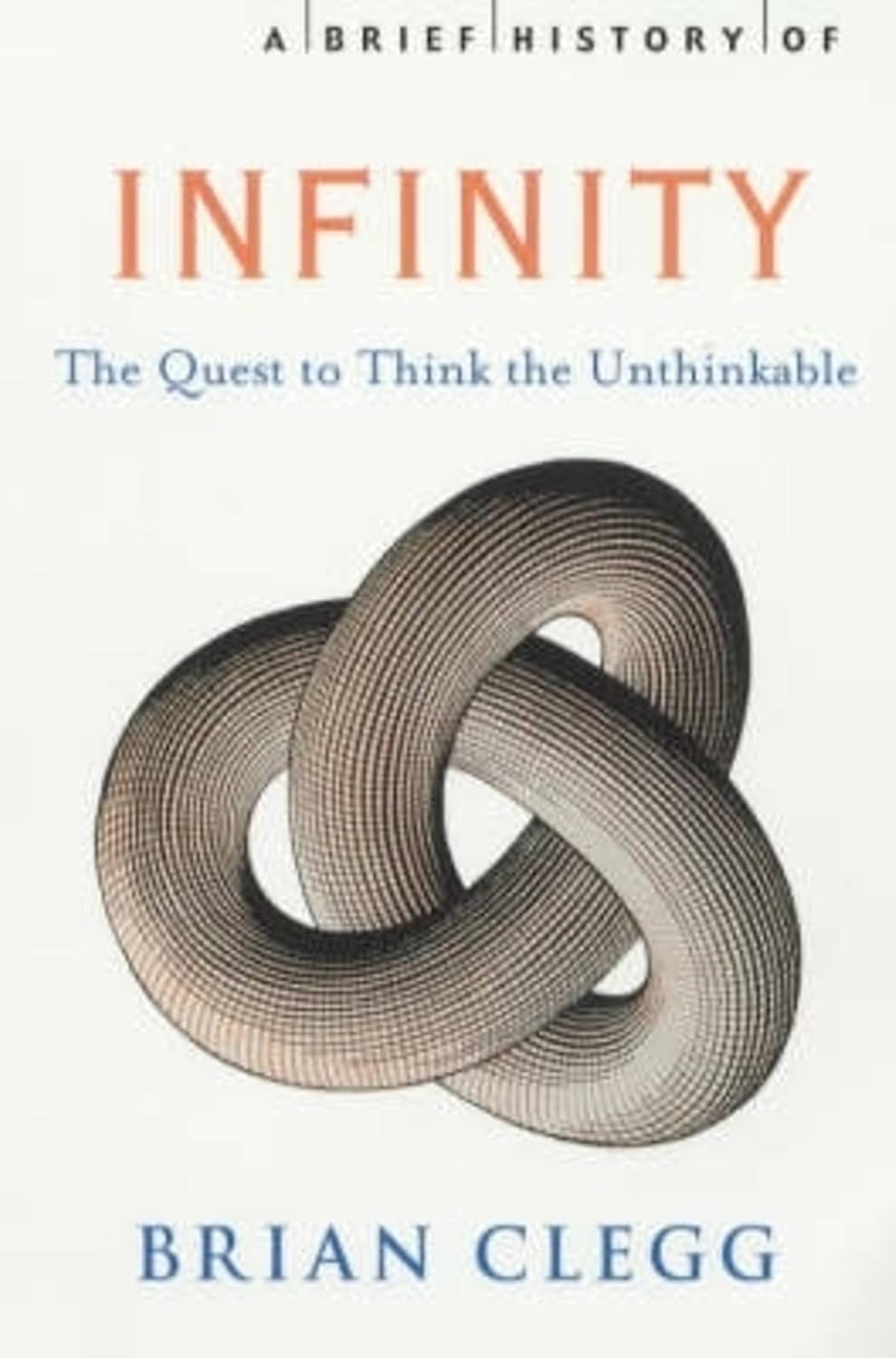Format: Paperback. You can purchase it on Amazon.com
- Publisher: Robinson.
- Publication date: 2022
- Language: English
- Print length: 272 pages
- ISBN-13: 978-1841196503
It is also available in audiobook format.
The Hungarian edition was published by Typotex Publishing Ltd. in 2025 and can be purchased at Typotex.
When people think of infinity, they usually picture the sideways figure eight (∞), but according to Brian Clegg, that symbol is not infinity at all—it’s “a ghostly impostor.” Infinity is not just a very large number; it’s a special, elusive concept that is even greater than the universe itself. It’s not a number, but a philosophical idea—and, what’s more, there are multiple kinds of infinity, and they are not all the same size.
Physicists tend to treat it casually, but it’s such a strange concept that its study has driven several great mathematicians to madness: Cantor, who laid the foundations of modern theory of infinity, discovered that there is more than one kind of infinity, ended up in a mental institution. Gödel, who investigated the limits of formal systems, became paranoid and starved himself to death. Nash, who was more concerned with game theory, economics, and cryptography, got off relatively lightly—with only a touch of schizophrenia.
Brian Clegg is a popular science writer — and so far, he hasn’t gone mad. He studied natural sciences at the University of Cambridge, specializing in experimental physics, and later earned an MA in operational research (a branch of mathematics) from Lancaster University. Before turning to creative consultancy and science communication, he worked as an expert on topics ranging from fingerprint recognition to digital currencies. Nowadays, he regularly gives lectures, appears on radio and television, and writes articles and reviews for various newspapers and magazines.
His book A Brief History of Infinity was launched with a sold-out lecture at the Royal Institution. The story begins with Buddha, who tried to name numbers as vast as a googol, and Archimedes, who counted all the grains of sand in the world. After introducing some everyday experiences of infinity, Clegg explores its nature through three thought experiments: Zeno’s paradoxes, Cantor’s theories, and Hilbert’s hotel.
Cantor introduced the concept of cardinal numbers, which can be used to compare different infinities. For example, ℵ₀ (“aleph-null”) is the smallest infinite cardinality—it’s the size of the set of natural numbers. But there are many, many more real numbers than that. How many more? Infinitely more! In Hilbert’s imaginary hotel, there are infinitely many rooms, and all of them are occupied—yet it can still accommodate an infinite number of new guests. This defies common sense, but it helps illustrate that while the idea of infinity is not intuitive, but it is logically consistent.
And it’s not just a quantitative matter. Clegg constantly reminds us that infinity also has spiritual significance. Anyone who thinks they understand it probably doesn’t. Nobel Prize-winning physicist Richard Feynman once said:
“I have to convince you not to turn away because you don’t understand it. You see, my students don’t understand it either. That’s because I don’t understand it. Nobody does.”
With that thought, any lay reader can confidently embark on the fascinating journey Clegg offers into the world of infinity.

